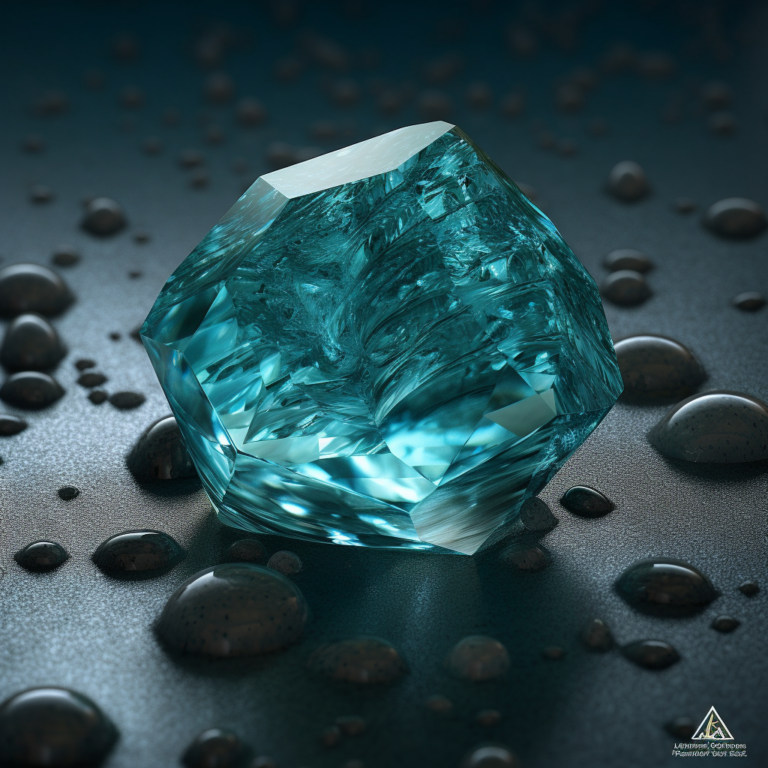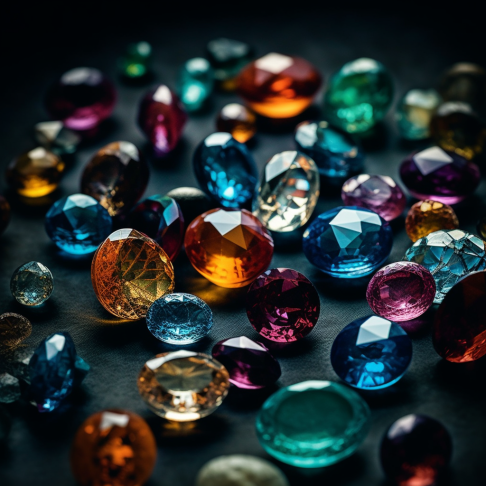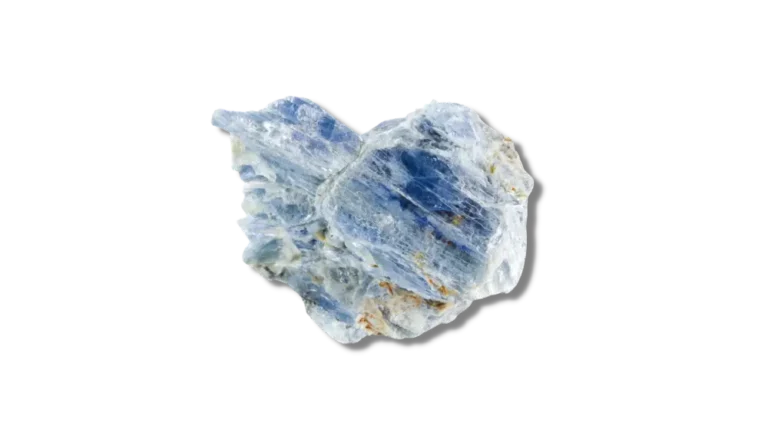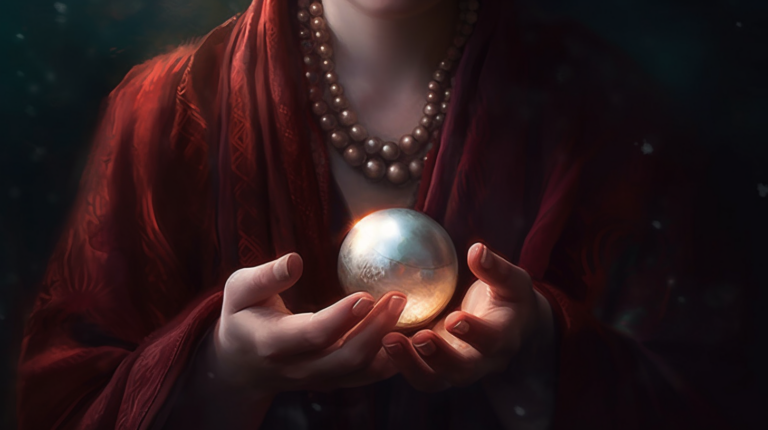Birthstones by Month: Unearth Your Gemstone and Its Profound Significance
Imagine wearing a gemstone that not only beautifies your appearance, but also resonates with your personality, illuminates your attributes, and connects with your birth month. That’s what birthstones do. They are more than just jewels; they are personal symbols that offer a meaningful connection to our birth month.
Birthstones have been treasured since ancient times. Their history traces back to the writings of Josephus and St. Jerome, who associated the twelve stones on a high priest’s breastplate with the twelve months of the year. Isn’t it interesting that something we wear today has such a deep historical connection?
Over the centuries, people have believed in the mystical properties of these gemstones. They are thought to bring good luck, protection, and positive vibes. Who wouldn’t want to carry around an accessory that doubles as a lucky charm?
Today’s list of birthstones has evolved immensely. The birthstones we know were standardized by the American National Retail Jeweler’s Association in 1912. Although birthstone lists may deviate slightly, there is a general consensus about the main birthstones for each month.
Birthstones for Each Month: A Detailed Journey
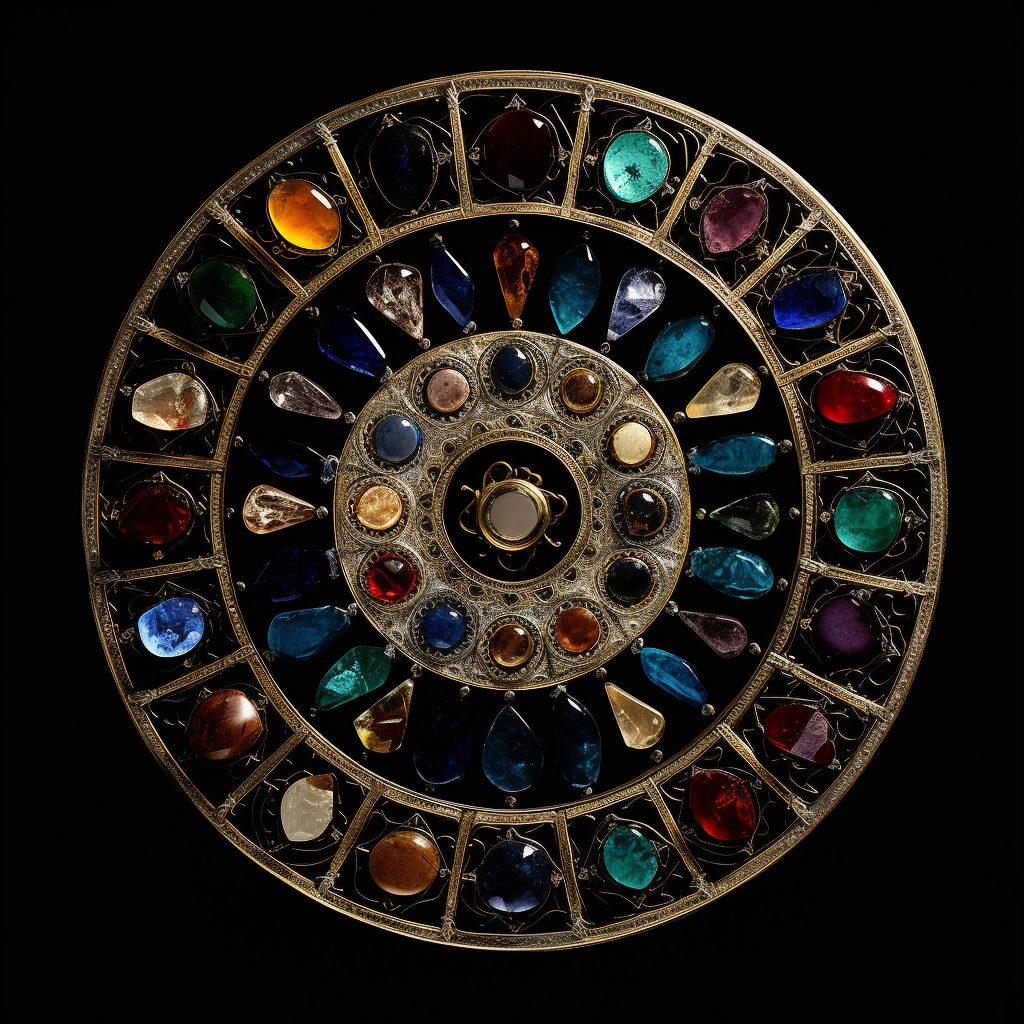
Now, let’s embark on a colorful journey across the year, discovering the birthstones that make each month unique.
Starting with January, the month is characterized by garnet, a gemstone known for its rich, deep red hue. Next, February birthstone, is amethyst. Can you imagine wearing a piece of jewelry with this vibrant, purple gemstone?
As spring begins, March introduces us to aquamarine and bloodstone. Imagine these gemstones, reflecting the colors of the serene sea and the vitality of the blooming nature. And then comes April, flaunting the hardest and most glamorous gemstone of all, the diamond.
May ushers in the radiant green of the emerald, while June is associated with three beautiful birthstones: pearl, alexandrite, and moonstone. Talk about having options!
The fiery red ruby symbolizes July. This is followed by August, painted with the green and pink hues of peridot, spinel, and sardonyx.
As autumn approaches, in comes the blue sapphire in September, succeeded by the unique opal and the multicolored tourmaline in October. The warm tones of topaz and citrine represent November, paving the way for December, which showcases the beautiful turquoise, zircon, and tanzanite.
And that concludes our journey. Each month hosts a unique gemstone, or in some cases, multiple, that not only symbolize the month of a person’s birth but also carry meaning and history with them. Does your birthstone reflect your personality? Do you feel a connection with it? Maybe it’s time to explore it more and discover its significance in your life.
Unveiling the Splendor of Birthstones: Their Color and Unique Characteristics

Isn’t it fascinating how each birthstone presents a unique color palette, mirroring the varied hues of life?
Garnet, January’s birthstone, enchants with its deep, wine-red color, whereas February’s amethyst unfolds a narrative in varying shades of purple. Aquamarine and bloodstone, representing March, captivate with maritime blues and specks of vibrant red, respectively.
April’s diamond may be colorless, yet it radiates a spectrum of colors with its mesmerizing sparkle. May’s emerald boasts a vivid green that echoes the renewal of spring, while the June birthstones offer a plethora of choices from the milky opalescence of pearl to the color-changing allure of alexandrite and the ethereal blue sheen of moonstone.
The hot summer month of July is represented by ruby‘s vibrant red, while August birthstones – peridot, spinel, and sardonyx – exhibit a stunning array of green, pink, and banded colors. September’s sapphire is synonymous with regal blues, but did you know it also comes in almost every color except red?
October boasts the breathtaking play-of-color in opal and a rainbow of options with tourmaline. November’s birthstones, topaz and citrine, bring warmth with their yellow and orange tones, mirroring autumn’s essence. Finally, December’s birthstones diversify the color spectrum with turquoise, zircon, and tanzanite, showcasing hues of blue and violet.
The colorful canvas of birthstones isn’t just aesthetically pleasing. It also lends to the unique characteristics that shape our choice. Their hardness, durability, luster, and rarity all play a part in their selection and significance. Wouldn’t you love to adorn a gemstone that resonates with your birth month and also complements your aesthetic?
Birthstone Engagement Rings: A Trendsetter in Modern Jewelry
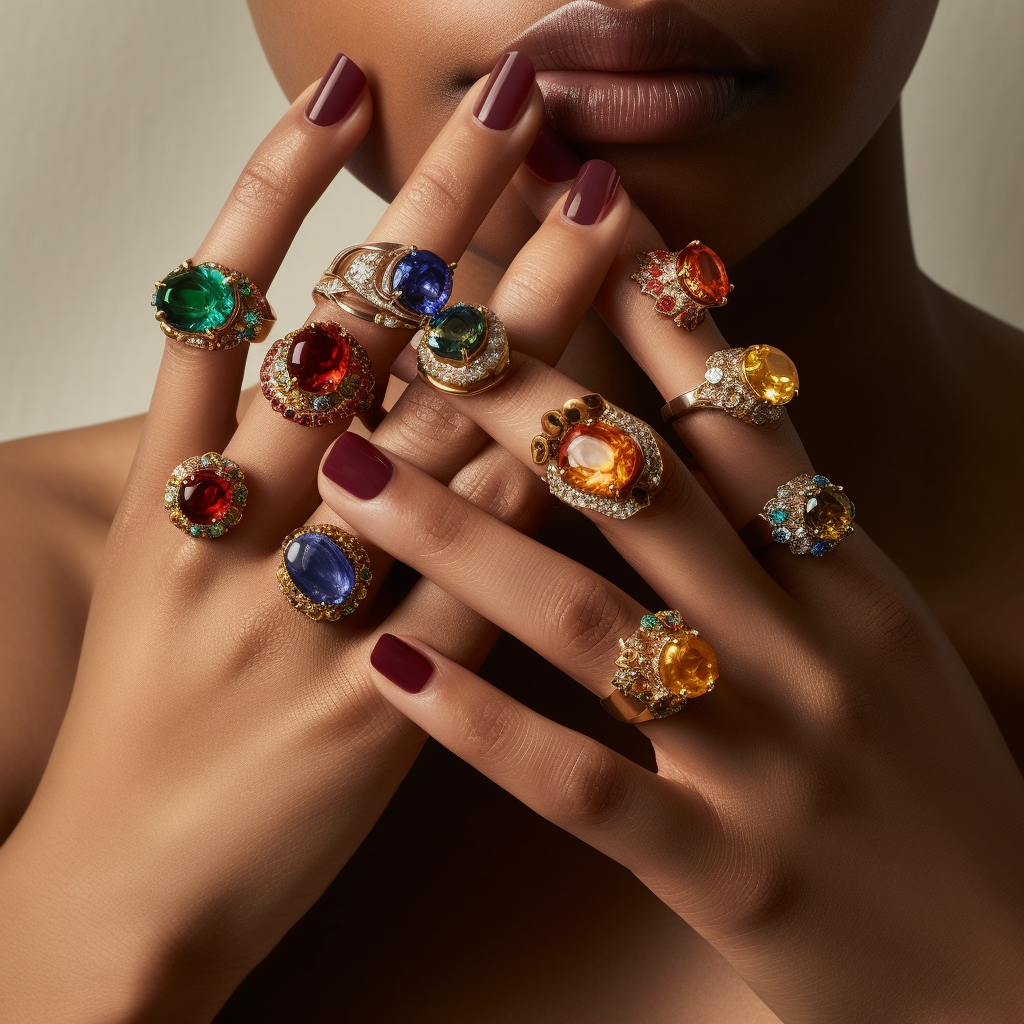
Have you ever thought about a diamond not being the only choice for your engagement ring?
Birthstone engagement rings have emerged as a modern trendsetter in jewelry, offering a personal and symbolic alternative to traditional choices. They not only add color and uniqueness to a ring but also gift it a personal touch, making the message of love even more meaningful.
For instance, an emerald ring for a May-born bride signifies not only her birth month but also love, rebirth, and fertility. A sapphire ring for a September-born groom could symbolize wisdom, nobility, and the promise of honesty and loyalty in their future.
The ease of customization with birthstones also allows couples to capture their individual stories and connections in their rings. Wouldn’t you relish the idea of your ring speaking volumes about your personal journey? From January’s garnet to December’s turquoise, the options are as myriad as the months themselves.
The wave of birthstone engagement rings is an exciting shift in the jewelry world. It allows couples to step out of the traditional norms and embrace their uniqueness. So, next time you think about an engagement ring, remember, the choice goes beyond just diamonds.
The Popularity of Birthstone Jewelry and Market Trends

Have you ever wondered why birthstone jewelry has become so popular? It’s the personal connection it offers, adding an emotional and symbolic depth to pieces that we wear close to our hearts.
Birthstone jewelry, ranging from rings and necklaces to earrings and bracelets, has been adorning the fashion world with its vibrant colors and deep meanings. Its increasing popularity has led to considerable growth in its market trends. An array of designs, from minimalist to opulent, allows one to choose a piece that resonates most with their personality and style. How would you prefer your birthstone – in a dainty pendant or a statement ring?
This trend extends beyond individual wear to gifting as well. Gifting birthstone jewelry has become a thoughtful and meaningful gesture. For instance, a mother’s ring with the birthstones of all her children, a friendship bracelet with shared birthstones, or a pendant with a loved one’s birthstone. Such gifts carry emotional weight and make for memorable keepsakes.
It’s no wonder then that the market for birthstone jewelry has flourished, both within traditional brick-and-mortar stores and online retail. With such a wide variety of options and meanings, it’s easy to see why birthstones have found a special place in our jewelry boxes.
The Durability of Birthstones: From Diamonds to Opals
As much as we admire the beauty of birthstones, how often do we consider their durability? It’s an important aspect especially when we intend to wear them regularly.
Birthstones exhibit a wide range of durability, with diamonds being the hardest and most durable. This is followed by sapphires and rubies, both renowned for their toughness. These stones can withstand everyday wear and tear, making them ideal for engagement rings and daily wear jewelry.
In contrast, softer birthstones such as pearl, opal, and turquoise, require extra care to prevent damage or scratching. Despite their delicate nature, their unique charm and allure are undeniable. After all, who can resist the shimmering play of colors in an opal or the serene blues of turquoise?
Understanding the durability of your birthstone is crucial in determining how and when to wear it. It also guides you on how to care for your pieces to ensure they last and retain their beauty. This knowledge, combined with the personal connection that comes from wearing your birthstone, adds to the overall value and appreciation of these remarkable gems.
Synthetic and Lab-Grown Birthstones: Affordable Alternatives

In the world of gemstones, have you contemplated how technological advancements have paved the way for alternatives to natural gems? Synthetic and lab-grown birthstones are increasingly gaining popularity as they offer an affordable option with comparable, if not superior, physical, chemical, and optical properties.
From synthetic rubies and sapphires to lab-grown diamonds and emeralds, these alternatives are chemically identical to their natural counterparts but are created in controlled laboratory environments. Their creation process not only makes them more affordable but also ensures fewer inclusions and superior clarity.
The lower price of synthetic and lab-grown birthstones doesn’t mean a compromise on quality. In most cases, they are hard to differentiate from natural gemstones and require professional gemological tools for identification. Could you discern a lab-grown diamond from a natural one without special equipment?
Most importantly, these alternatives offer a sustainable choice in an industry often criticized for its environmental impact. In this way, synthetic and lab-grown birthstones align with an increasing consumer consciousness about ethical purchases.
The Symbolism and Metaphysical Attributes of Birthstones

Each birthstone is not just a gem but a symbol carrying a host of meanings, beliefs, and metaphysical properties. Have you ever wondered what your birthstone symbolizes?
Starting from the protective properties of January’s garnet, thought to keep the traveler safe, to December’s turquoise and zircon, believed to bring prosperity and wisdom, each birthstone has a story to tell.
The emerald of May is often associated with fertility, rebirth, and love, while July’s ruby is thought to protect against evil. September’s sapphire is believed to bring wisdom and calmness, and November’s topaz is claimed to bring balance and healing.
These attributes, steeped in cultural lore and centuries of belief, add layers of meaning to these gemstones. Even if you don’t subscribe to these beliefs, the stories make your birthstone more intriguing and personal.
Birthstone Care, Maintenance and Identification
Looking after your birthstone is vital for preserving its beauty and longevity. This care starts with understanding the key characteristics of your gem, such as its hardness and sensitivity to light and chemicals.
Some birthstones, like diamond, can withstand regular exposure, while others like pearl and opal require careful handling to avoid scratches. Cleaning methods also vary. For instance, warm soapy water can be used for diamonds and sapphires, while pearls should only be wiped with a damp cloth.
Recognizing genuine birthstones from imitations or treated ones is equally critical. Knowledge of the mining sources, treatments, and identifying characteristics can help distinguish a true gem. For instance, a real Burmese ruby often commands a higher price than its counterparts due to its superior color.
In the end, owning a birthstone is not just about adorning a piece of jewelry. It is about cherishing a piece of history, celebrating your birth month, understanding the value of the gem, and knowing how to maintain its luster for years to come. As we wrap this journey, we hope you are inspired to explore your birthstone further and appreciate the unique charm it carries.
Frequently Asked Questions (FAQs)
What are birthstones and their historical significance?
Birthstones are gemstones associated with the month of a person’s birth. Their history dates back to ancient times, being mentioned in the writings of Josephus and St. Jerome who linked the twelve stones on a priest’s breastplate to the months of the year. Over time, these stones have been believed to hold mystical properties, bringing luck and positivity to their bearers.
How were the birthstones standardized?
The modern list of birthstones as we know them was standardized by the American National Retail Jeweler’s Association in 1912. While there may be slight variations in the list, a general consensus exists on the main birthstones for each month.
How can birthstones enhance my personal style?
The distinctive color and unique characteristics of each birthstone lend to their appeal as personal style elements. From the deep red of garnet to the vibrant turquoise, they introduce varied color palettes to your wardrobe. You can wear them as rings, necklaces, earrings, or bracelets, either in minimalist or opulent designs, to resonate with your personal aesthetic.
Are birthstone engagement rings a popular choice?
Yes, birthstone engagement rings have become a modern trendsetter in the jewelry world. They provide a symbolic and personal alternative to traditional diamond rings, encapsulating individual stories and connections.
How durable are birthstones?
Birthstones vary significantly in durability. Diamonds, for instance, are the hardest and most durable, whereas softer birthstones like pearls and opals require extra care to prevent damage. Understanding the hardness and care requirements of your birthstone is crucial when you intend to wear it regularly.
What are synthetic and lab-grown birthstones?
Synthetic and lab-grown birthstones are chemically identical alternatives to natural gems, created in controlled laboratory environments. They offer a more affordable option with fewer inclusions and superior clarity, and are considered a more sustainable choice within the gemstone industry.
Do birthstones carry any symbolic or metaphysical significance?
Yes, each birthstone carries a unique set of symbolic and metaphysical attributes, from believed protective properties to associations with luck or wisdom. For instance, the emerald of May symbolizes fertility and rebirth, while November’s topaz is thought to bring balance and healing.
How can I take care of my birthstone?
Birthstone care and maintenance depend on their hardness and sensitivity to elements like light and chemicals. Harder stones like diamonds can withstand regular cleaning with warm soapy water, while softer ones like pearls need to be merely wiped with a damp cloth. Knowledge about your birthstone’s properties is vital to preserving its beauty and longevity.
How can I determine if my birthstone is genuine?
You can distinguish genuine birthstones from imitations or treated ones by familiarizing yourself with their mining sources, treatments, and identifying characteristics. For example, a real Burmese ruby often has a superior color commanding a higher price than its counterparts. Professional gemological tools may be required for accurate identification.


